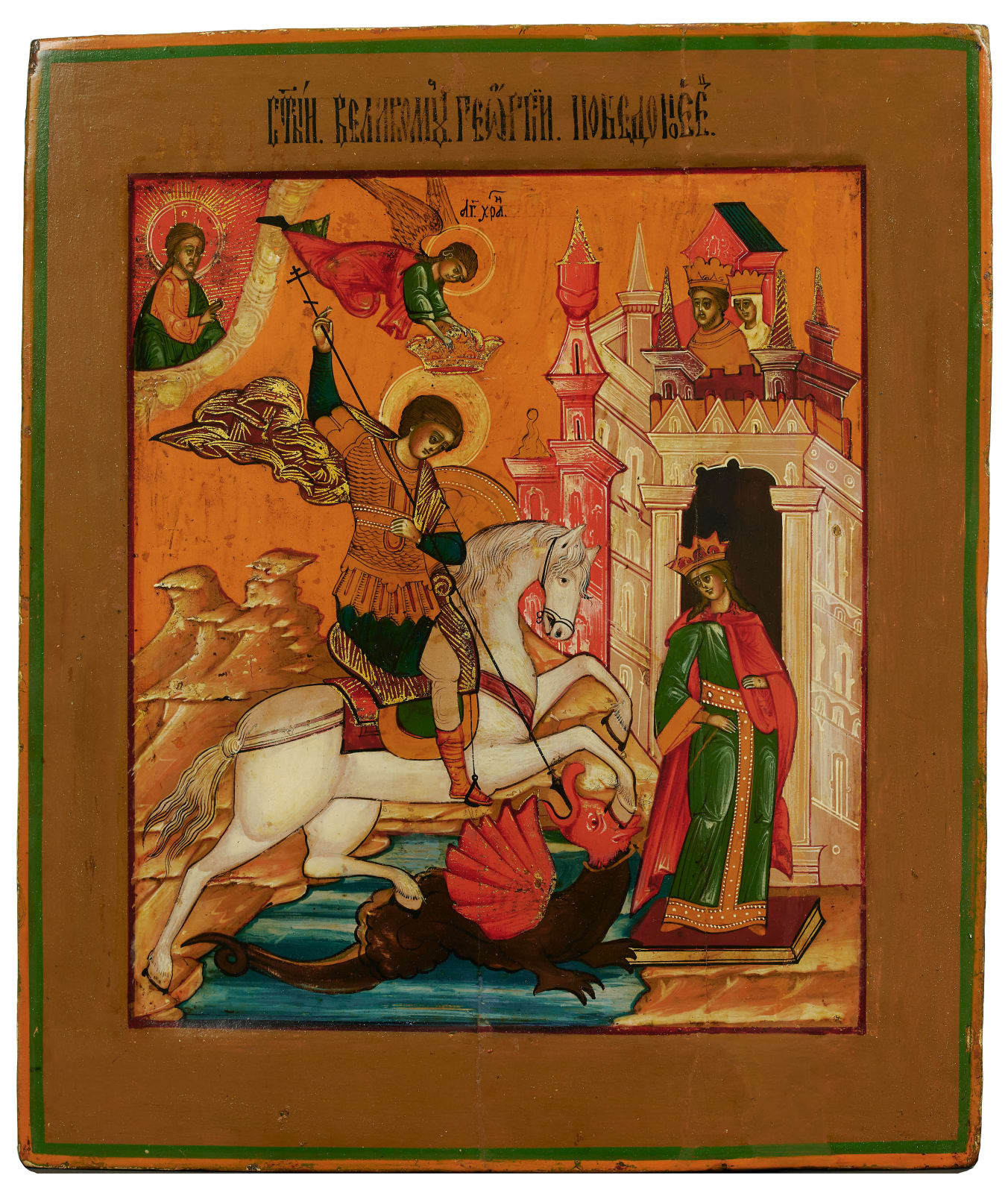Saint George and the Dragon
31 x 27 cm
Inscription in Slavonic: The Great Martyr George the Victory-bearer
Feast Day: April 23rd
Saint George was a Roman officer martyred for his faith in the reign of the emperor Diocletian. He was widely venerated throughout Europe and became the patron saint of England in the 10th century. In the Middle Ages several legends sprang up around Saint George. One of them tells how he rescued the princess who had to be given in sacrifice to the dragon. Saint George arrived on his white charger and saved her just before she was devoured by the beast. This icon shows the narrative part of the event with her parents the King and Queen watching from the city’s battlements. In the upper left corner Christ blesses the scene. An angel crowns Saint George.
This is a very good example of the 19th century revival style. The painter follows the manner of the 16th century closely. This renewal paralleled the translation of the Greek mystical writings of the Desert Fathers and the profound spiritual revival of the Hesychast prayer tradition of Mount Athos.
Some three hundred kilometres west of Moscow are the towns of Mstera, Kholuy and Palekh. Famous throughout Russia in the eighteenth and nineteenth centuries these communities were devoted entirely to the production of icons and later, during the Soviet period, they painted lacquer boxes illustrating fairy tales. Many of the workshops were run by Old Believers, a schismatic sect within the Orthodox Church who resisted the westernisation of their art.

